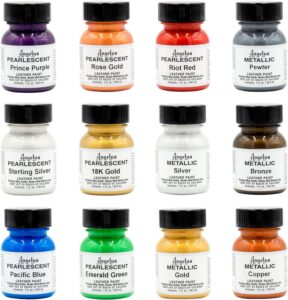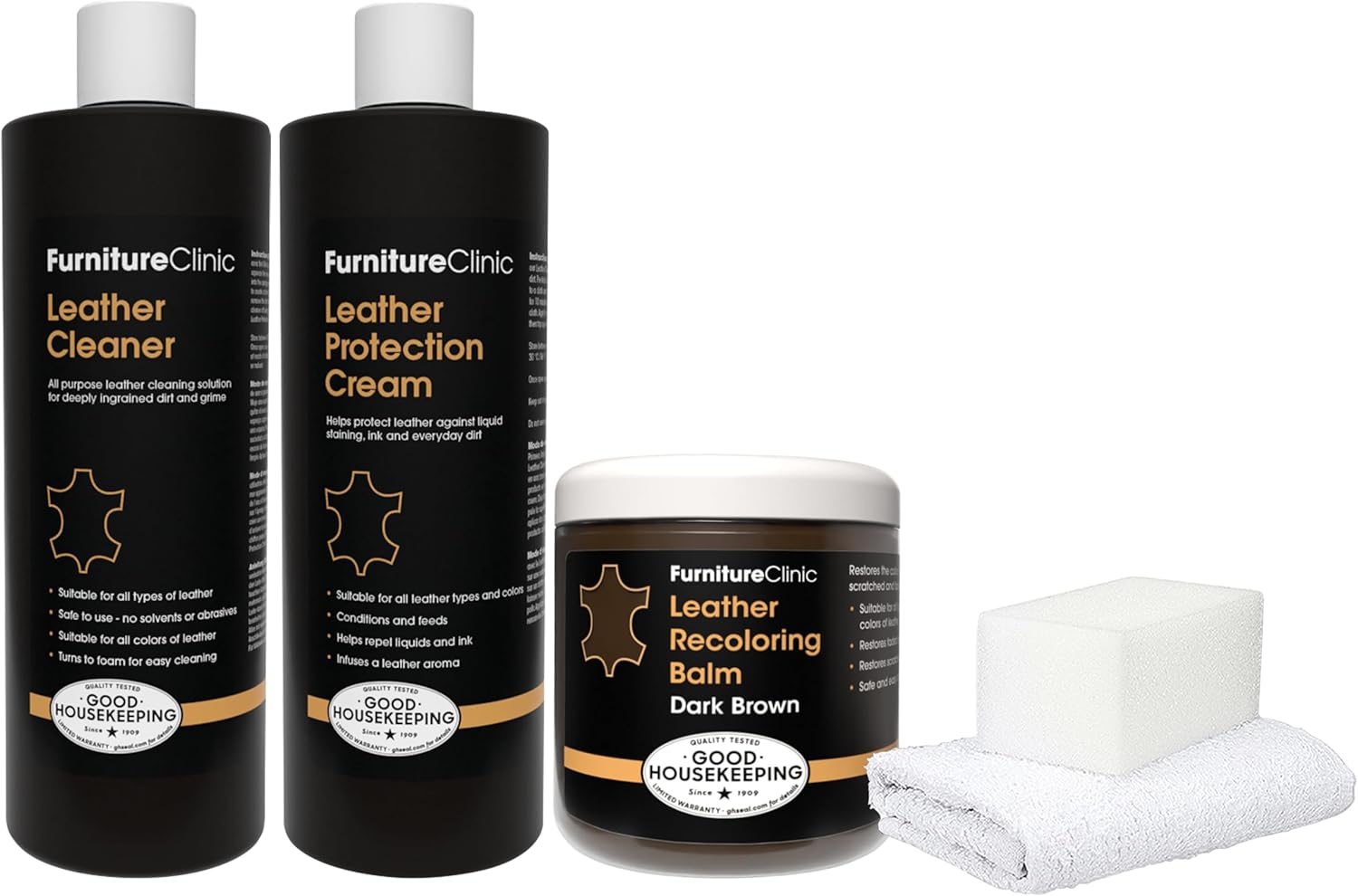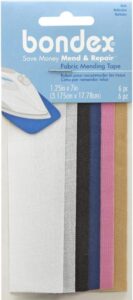As an Amazon Associate, we receive a small commission when you use these links to buy. Thank you!
Other Products We Recommend
Below you'll find a complete list of products and tools that we have long recommended to customers. We are now an Amazon Associate and receive a small commission when you use the link to buy. Thank you!
Click to learn more about:
Cleaners & Solvents
Also known as ethanol or methylated spirits, this is needed to clean both non-absorbent and absorbent materials. Rubbing alcohol can also be used, though it contains more water and is somewhat less effective. Step up to lacquer thinner if you're changing color or dealing with lots of conditioning residue or body oil.
Lacquer thinner has always been our go-to. It makes fast work of removing slimy silicone conditioners like ArmorAll® as well as other paints.
Acetone should be used with caution, as it will damage or strip most finishes. It's great for removing flaking or peeling paints, waxes and silicone conditioners.
This is just a fancy bleach, but folks report success using it on their vinyl boat upholstery. Do not use on leather.
Use this enzyme cleaner to break down and deodorize urine, feces, vomit, milk and other stains. It's safe for use on leather, vinyl, fabric and carpet. Just spray and walk away.
Plain ol' white vinegar is an oft-handy and non-toxic household cleaner. Use it to treat water, wine, coffee, cola stains, and cigarette smoke on leather or vinyl.
Use 3% hydrogen peroxide to promptly treat blood stains in fabric and even leather.
Primers & Blockers
Use this on sticky vinyl to block plasticizer migration. It dries with a satin finish.
Use this as a primer on rigid interior or exterior plastics where Rub 'n Restore® colors will be applied.
Bulldog® is just as good as SEM® for prepping plastics, and it can often be found at local hardware stores or auto paint suppliers.
Adhesives
This is the same leather glue we sell in our shop, except it's a larger 5 oz. tube for couch flippers and hobbyists turning pro who find themselves subpatching lots of holes.
If our leather glue is out of stock, LocTite® is a good alternative for patching holes in leather and vinyl. It dries flexible and clear with a strong, waterproof bond and can be found at many hardware stores.
This is also a good alternative to the glue we sell for patching holes in leather or vinyl. It is flexible, tenacious, bonds to wood, fabric, leather, ceramic, glass, metal and is available at most hardware stores.
Texturizers
We've been using this for years to blend the texture of fussy or difficult repairs on leather and vinyl upholstery. Keep the tip clean, shake vigorously, and practice on cardboard first. Use only a thin mist, let dry, and gently polish with 500 grit before applying color. Do not use on fabric or polyurethane faux leathers.
This is best suited to lower kick trim panels and plastics that need extra protection from impact, chipping and abrasion.
Rubberized Coatings for Scaly, Sun-Rotted Vinyl
While designed for RV roofs, Liquid Rubber works beautifully to repair more severe cracking and sun-rotted vinyl on hot tub covers and boat upholstery. You don't need to be heavy-handed with it like an RV roof either. A quart (perhaps diluted with some water for easier spreading) is typically enough for a hot tub cover or boat. It's only available in white, so you may want to cover it in one of our colors.
When applying Liquid Rubber® to a cracked vinyl surface, a foam brush or roller will result in the most smooth, level surface possible. Please note, foam brushes should not be used with Rub 'n Restore® colors, because they may create more foam and bubbles on the surface, resulting in a spotted or fish-eye appearance.
FlexSeal® Spray is the least versatile of rubberized coatings and not really designed for vinyl. It is best used for small areas of damage where the polyester mesh is mostly exposed. It can be found at local hardware stores and has more color options, but few, except white, will be a good match to your boat vinyl or hot tub cover. When it comes to peeling faux leather, it'll be short-lived lipstick on a pig.
Other Coatings, Finishes & Balms
If you're wanting to change the color of your boat's vinyl upholstery, particularly from dark to light, opt for this heavier aerosol coating. It also works on plastic.
Classic Coat is recommended if you're wanting to change color in an auto interior or from dark / red to a paler shade. It works on both leather and vinyl upholstery.
We recommend Angelus® leather paints to change the color of shoes or boots that need extreme durability.
We recommend Angelus® leather paints to change the color of shoes or boots that need extreme durability.
There are a few cases where we recommend a competitor's balm. Absorbent leather that is faded, stained, and really dry but otherwise has physical damage would benefit from a balm. Learn more about the differences between balms, dyes and paints (finishes) here before proceeding.
For saddles and tack, we recommend Clyde's® Recoloring Balm. it's more like a thick acrylic paste. It covers well, dries hard, is difficult to strip, and is up to the task of being chafed between your sweaty thighs as you ride into the sunset.
Some vinyls (particularly in RVs or brand new boats) have a very dull finish. If you find our color looks too shiny, apply a thin coat of this water-based clear finish.
Faux Leather Fabric Wax
After staining, use this clear wax to restore the leather-like surface on faux leather fabric or microfiber. Jolie's® wax is odor-free and non-hazardous. Apply with a clean, lint-free cloth to apply. Wait at least 8 hours before applying any additional coats.
This clear wax is also suitable for restoring or creating a leather-like surface on fabrics and microsuede. It has no odor, can be applied indoors, and dries in just one hour.
Other Tools
For decades we have loved Milwaukee's dual temperature heat gun. This dual-temperature heat gun by Steinel is more affordable and has better reviews on Amazon. Use the lowest setting for leather and vinyl repairs. Heavy-duty vinyls can take the higher heat setting, which is sometimes necessary to get the vinyl to accept a grain from the embossing pad.
Use a reducer nozzle to focus the heat on small repairs and protect surrounding areas, particularly with more heat sensitive materials like leather and thinner vinyls. We usually drill a hole on the side of the tip to allow even more heat to escape. It might take a few extra seconds for the filler putty to cure, but it guarantees you won't burn the upholstery.
We love this style of detail touch-up gun for spraying any of our colors and clear finishes. It's small and lightweight. This particular model is cheap and somewhat disposable. Still, we prefer it to higher-end models like Binks which still require routine dismantling and cleaning and cost tenfold. Please note, this gun is not HVLP (high volume low pressure) and thus does not meet environmental regulations required of professionals. You'll also need a 1/4" needle valve, industrial plug and air hose with coupler to run it on a standard air compressor (see below).
Attach this to your detail siphon gun to control and regulate air flow from the compressor. These 90º needle valves are hard to find, but we love them, because they enable you to perch the gun on the edge of a trash can or bucket if you need to pause from shooting.
Thread this industrial plug into the needle valve, and use to quick connect to the air compressor hose. Make sure the hose also has an M-style coupler.
This air hose comes equipped with an M-style coupler that works with the siphon gun, needle valve, and quick connect above. Make sure it also fit your compressor. Consider if a longer hose is needed.
If you don't have an air compressor to spray the finish, a Preval® sprayer is a good option. It atomizes just about any paint or solvent using canisters of propellant.
Upholstery Repair Supplies
A curved needle and upholstery-grade thread (along with needle-nose pliers) are essential for repairing torn seams.
Sometimes that curved upholstery needle is tough to pull through thick, dry leather or vinyl. Needle nose pliers will make the process much easier and save your finger tips. Just be careful not to snap off the tip of your needle with them.
This special needle is used to tuft or replace missing buttons on upholstery. It comes with clasps (for the underside), but you'll still need to source your own button(s).
Choose a button in the shade most similar to the desired color. Our colors can be used to stain it the desired color, but it's easier to go darker than lighter. Be sure to pick the correct sized button. Avoid buttons made of PU faux leather (which may eventually peel or flake).
If you need to replace or repair the foam substrate, be sure to choose a high-density version in the proper thickness.
In upholstery, quilt batting (also known by the brand name Dacron®) is used between high-density foam and the leather, vinyl or fabric. It softens curves and corners and hides flaws. It's great for plugging smaller gouges in the stuffing (think dog chew damage). It's also great for plumping up sofa cushions before repairing or refinishing; it will reduce the stress on the leather -- and your efforts.
Trying to subpatch holes or tears on a vertical surface? Use an iron-on fabric, and insert it shiny (adhesive side) up, so it contacts the material. Use a heat gun to warm the patch, and firm, even pressure to adhere it to the material, and you'll evade gravity.
If your hot tub cover is falling apart at the seams, this peel-and-stick tape is an easy and economical way to restore structural integrity to the cover. Use Liquid Rubber to waterproof and seal the tape.
These come in handy if you have a panel or component that just won't stay put, particularly in RVs and boats. Insert your screw into the housing before installation, and conceal its appearance with the cap. Our colors can be applied to the cap so it matches the surroundings. If the cap is in a high-traffic area, use a plastic primer first to maximize durability. If the cap is in a low-traffic area, there's no need.
Dye Fixatives (Stop Blue Jeans & Clothing from Bleeding)
Jacquard® is our favorite. While it says for use with their iDye™ line of dyes, we've had great success with this fixative on garments and fabrics that have been dyed with other means. Jacquard's fixative works on both cellulose (linen, cotton, rayon) and protein fibers (silk, wool), making it the most versatile.
Prevent blue jeans, denim and other commercially dyed fabrics from back-staining or bleeding color onto your leather or vinyl upholstery with this dye fixative. It works best on fabrics containing mostly cotton, linen, rayon, ramie, not silk or wool.
Retayne® is what the pro quilters and dyers use. It works only on cellulose fibers (cotton, linen, rayon) and has a higher VOC than Jacquard® or Rit®.













































